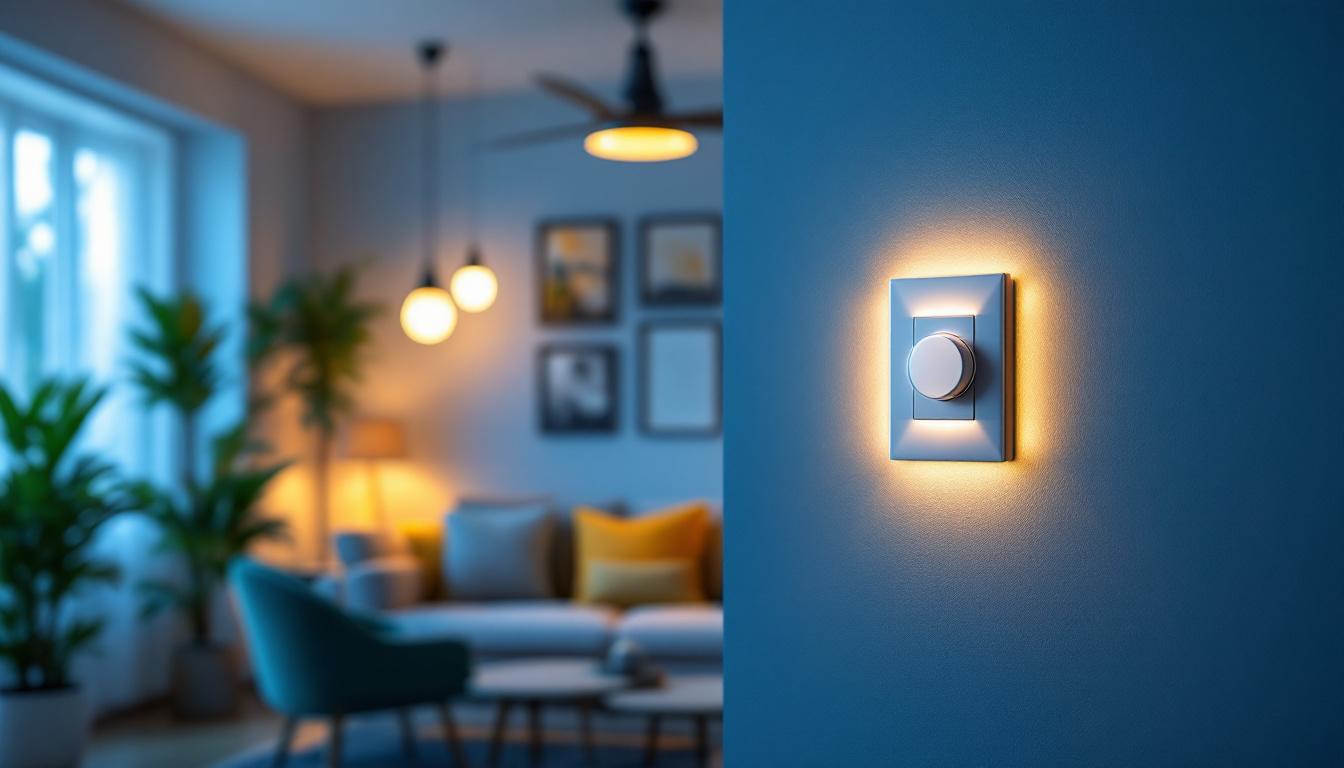
For lighting contractors, the right tools and equipment can make all the difference in delivering high-quality installations and ensuring client satisfaction. Among these tools, the 4ft light bulb stands out as a versatile and essential component. Understanding the various aspects of this lighting solution and the tools that accompany it can enhance efficiency and effectiveness on the job. This article will explore the importance of 4ft light bulbs, the essential tools for lighting contractors, and tips for optimizing their use.
4ft light bulbs are widely used in commercial and industrial settings, providing ample illumination for large spaces. Their popularity stems from their efficiency, longevity, and adaptability to various lighting fixtures. Understanding the benefits of these bulbs is crucial for lighting contractors aiming to meet diverse client needs.
One of the primary advantages of 4ft light bulbs is their energy efficiency. Many modern variants, such as LED options, consume significantly less power than traditional incandescent bulbs, leading to reduced energy bills for clients. Additionally, these bulbs have a longer lifespan, often lasting up to 25,000 hours or more, which means fewer replacements and maintenance calls for contractors.
Furthermore, the longevity of 4ft bulbs contributes to sustainability efforts. By using energy-efficient lighting solutions, contractors can help clients reduce their carbon footprint while also promoting a greener environment. This is particularly important as businesses increasingly seek to align their operations with eco-friendly practices, not only to comply with regulations but also to appeal to environmentally conscious consumers.
4ft light bulbs are not limited to one specific type of installation. They can be used in various settings, including warehouses, retail spaces, office buildings, and even residential garages. This versatility allows lighting contractors to cater to a wide range of projects, making them invaluable tools in their arsenal.
Moreover, these bulbs come in various styles, including fluorescent, LED, and even smart lighting options. This diversity enables contractors to select the best fit for each project, whether the focus is on aesthetics, functionality, or energy savings. For instance, smart 4ft light bulbs can be integrated into a building’s automation system, allowing for remote control and scheduling, which can enhance energy management and improve user convenience. Additionally, the ability to adjust brightness and color temperature can create tailored lighting environments that enhance productivity in workplaces or create inviting atmospheres in retail settings.
In addition to their functional advantages, 4ft light bulbs can also play a significant role in enhancing safety and security. Proper lighting is essential in commercial spaces to prevent accidents and ensure visibility, particularly in areas like loading docks or stairwells. By providing adequate illumination, these bulbs help create a safer environment for employees and customers alike, reducing the risk of injuries and liability issues for business owners. Furthermore, well-lit spaces can deter criminal activity, making 4ft bulbs a crucial component in any comprehensive security strategy.
To effectively work with 4ft light bulbs, lighting contractors require a set of essential tools. These tools not only enhance the installation process but also ensure safety and precision. Below are some of the most important tools that should be included in every lighting contractor’s toolkit.
Wire strippers and cutters are fundamental tools for any lighting contractor. Properly stripping wires is crucial for making secure electrical connections, which is vital for the safe operation of light fixtures. High-quality wire strippers allow contractors to remove insulation without damaging the wire itself, ensuring reliable connections.
Cutters, on the other hand, are necessary for trimming wires to the appropriate length. A clean cut is essential for optimal performance, and using the right tool prevents fraying and other issues that could lead to electrical problems down the line. Moreover, investing in ergonomic models can reduce hand fatigue during prolonged use, allowing contractors to work more efficiently and comfortably on larger projects.
Safety is paramount in electrical work, and a voltage tester is an indispensable tool for lighting contractors. This device allows contractors to verify that electrical circuits are live or de-energized before beginning any installation or maintenance work.
Using a voltage tester can prevent accidents and ensure that contractors can work confidently. It is advisable to invest in a reliable model that provides accurate readings and is easy to use, enhancing both safety and efficiency on the job. Some advanced models even feature digital displays and audible alerts, making it easier to identify voltage levels quickly, which can be especially useful in complex installations where multiple circuits are involved.
When working with 4ft light bulbs, especially in commercial or industrial settings, a sturdy ladder or scaffolding is essential. These tools enable contractors to reach high ceilings and fixtures safely. It is important to choose equipment that is rated for the task at hand, ensuring stability and safety during installations.
Additionally, using ladders with features such as non-slip feet and wide bases can further enhance safety. Contractors should also be mindful of weight limits and proper ladder usage to minimize the risk of accidents. Furthermore, scaffolding can provide a more stable and spacious working platform, particularly for extensive lighting installations, allowing multiple contractors to work simultaneously without compromising safety. Proper training in scaffold assembly and disassembly is also crucial, as it ensures that all team members are aware of safety protocols and best practices, leading to a more efficient workflow.
While the aforementioned tools are essential, several additional tools can further streamline the installation process and improve overall efficiency. These tools can help lighting contractors complete their tasks more quickly and effectively, ultimately benefiting their clients.
A power drill is a versatile tool that can be used for various tasks, including installing light fixtures and mounting brackets. Having a quality drill and a selection of drill bits on hand allows contractors to tackle different materials, such as wood, metal, or drywall, with ease.
Using the right drill bit for the job is crucial, as it ensures clean holes and prevents damage to the surrounding material. Investing in a set of high-quality bits can save time and effort during installations, making the process smoother and more efficient.
In addition to a voltage tester, a circuit tester can be a valuable tool for lighting contractors. This device allows contractors to check the integrity of electrical circuits and identify any potential issues before installation.
By using a circuit tester, contractors can ensure that all connections are secure and functioning properly. This proactive approach can prevent future electrical problems and enhance the reliability of the installed lighting system.
Organizing wiring is a critical aspect of any lighting installation. Cable ties and clips help keep wires neat and secure, reducing the risk of tangling or damage. A tidy installation not only looks professional but also makes future maintenance easier.
Using cable ties allows contractors to bundle wires together, while clips can be used to attach wires to walls or ceilings. Investing in a variety of sizes and styles ensures that contractors are prepared for any installation scenario.
To maximize the effectiveness of 4ft light bulbs, lighting contractors should adhere to best practices during installation. These practices not only enhance the performance of the lighting system but also ensure the safety and satisfaction of clients.
Before beginning any installation, it is essential to plan the layout of the lighting system. This involves determining the optimal placement of fixtures to achieve even illumination throughout the space. Factors such as room size, ceiling height, and the purpose of the area should all be considered.
A well-thought-out layout can prevent issues such as dark spots or overly bright areas, ensuring that the lighting meets the client’s needs and enhances the overall environment.
Adhering to local electrical codes and regulations is crucial for any lighting installation. These codes are designed to ensure safety and reliability, and failing to follow them can lead to serious consequences, including fines or safety hazards.
Lighting contractors should familiarize themselves with the relevant codes in their area and ensure that all installations comply. This not only protects the contractor but also builds trust with clients, who can feel confident in the safety of their lighting systems.
After completing an installation, it is essential to conduct thorough testing of the lighting system. This includes checking that all bulbs are functioning correctly and that there are no flickering or dimming issues. Additionally, contractors should verify that all fixtures are securely mounted and that wiring is properly organized.
Taking the time to perform these tests can prevent future problems and ensure that clients are satisfied with their new lighting. It also provides an opportunity for contractors to address any issues before leaving the job site.
In the world of lighting contracting, the 4ft light bulb is an essential component that offers versatility, efficiency, and longevity. By equipping themselves with the right tools and adhering to best practices, lighting contractors can ensure successful installations that meet the needs of their clients.
From wire strippers and voltage testers to proper planning and adherence to electrical codes, every aspect of the installation process plays a vital role in delivering high-quality results. By focusing on these elements, lighting contractors can enhance their reputation, build lasting client relationships, and ultimately thrive in their field.
As the demand for energy-efficient and effective lighting solutions continues to grow, staying informed about the latest tools and techniques will empower lighting contractors to excel in their projects and provide exceptional service to their clients.
Ready to elevate your lighting projects with the best in class 4ft light bulbs and essential tools? Look no further than LumenWholesale, where we provide contractors with top-quality, spec-grade lighting products at unbeatable wholesale prices. Say goodbye to local distributor markups and hello to superior lighting products that meet the highest industry standards. With our hassle-free bulk buying and free shipping, you can trust that you’re getting premium lighting at the best value — without hidden fees or compromises. Don’t miss out on the perfect blend of quality, affordability, and convenience. Visit LumenWholesale now for Wholesale Lighting at the Best Value and take your lighting installations to the next level.

Discover essential tips and insights for lighting contractors on effectively installing and troubleshooting 2-speed fan switches.

Explore the key differences between fluorescent and LED lighting in this comprehensive guide tailored for lighting contractors.

Discover the future of sustainable illumination with our comprehensive guide on solar-powered commercial lighting.

Discover the ultimate guide to light switches with expert insights tailored for lighting contractors.